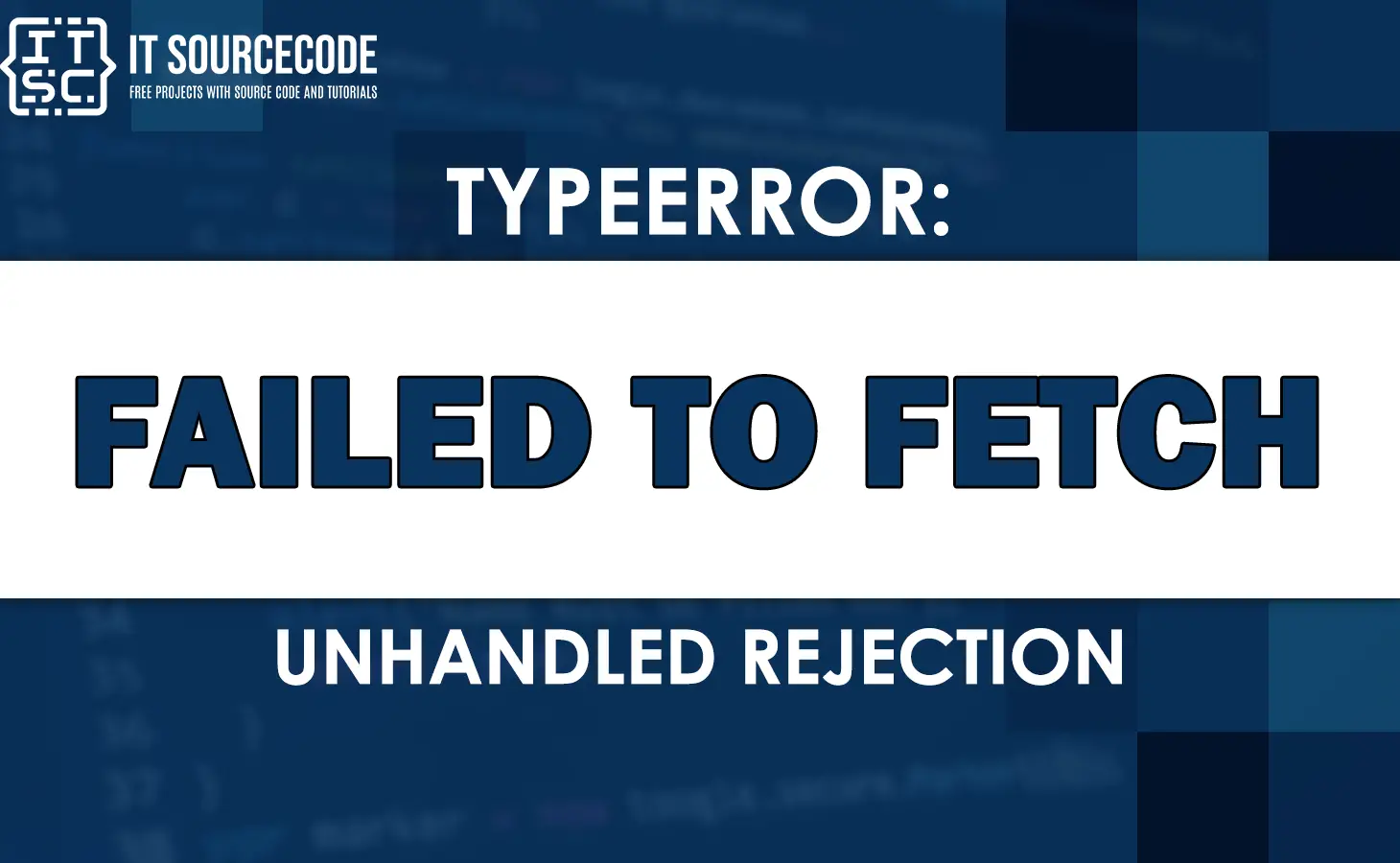As a web developer, you may come across the error message “Unhandled Rejection TypeError: Failed to fetch.”
This error message can be frustrating, especially when you’re trying to get your website up and running smoothly.
In this article, we’ll discuss what this error message means, its possible causes, and some ways to resolve it.
What is “Unhandled Rejection TypeError: Failed to fetch” Error?
The “Unhandled Rejection TypeError: Failed to fetch” error message is a common error in web development.
Usually, the error is associated with JavaScript’s fetch() method, which is used to make HTTP requests. It occurs when a fetch() request fails to retrieve the requested resource from the server.
When this happens, the fetch() method throws an error with the message “TypeError: Failed to fetch,” and if the error is not caught, it becomes an unhandled rejection.
Causes of “Unhandled Rejection TypeError: Failed to fetch” Error
There are several possible causes of the “Unhandled Rejection TypeError: Failed to fetch” error.
Some of the most common ones are:
- Network Connectivity Issues
- CORS Error
- Incorrect URL or API Endpoint
- Server Error
Now that we know the possible causes of this error, let’s discuss some ways to resolve it.
How to Resolve Unhandled Rejection TypeError: Failed to fetch
Here are the ways you can try to fix the error Unhandled Rejection TypeError: Failed to fetch
Check Network Connectivity
The first step to resolving this error TypeError: Failed to fetch is to check the network connectivity between the client and server.
Ensure that the client is connected to the internet and that there are no network outages or connectivity issues.
Check CORS Configuration
If the error is caused by a CORS issue, you can resolve it by configuring the server to allow cross-origin requests. You can also try using a proxy server to bypass the CORS restriction.
Check API Endpoint or URL
Ensure that the fetch() method is being used to request the resource from the correct URL or API endpoint. Verify that the URL or API endpoint is valid and accessible.
Check Server-side Errors
If the server is causing the error, you may need to troubleshoot the server-side code to identify the cause of the error. You can check the server logs to get more information about the error and resolve it accordingly
Use Try and catch statement
When you make a fetch request in JavaScript, sometimes the response may contain an error.
If you do not handle this error properly, you may encounter an “Unhandled Rejection TypeError: Failed to fetch” error.
Particularly, this error occurs when a promise is rejected, but there is no corresponding catch statement to handle the rejection.
Here is an example code that can cause this error:
fetch('https://example.com/api')
.then(response => {
if (!response.ok) {
throw new Error('Network response was not ok');
}
return response.json();
})
.then(data => {
console.log(data);
});
In the above code, if the response from the API is not “ok” (i.e., has an HTTP status code other than 200), an error is thrown.
However, there is no catch statement to handle the error if it occurs.
To resolve this error, you should add a catch statement to handle the rejection. Here is an updated code that handles the error:
fetch('https://example.com/api')
.then(response => {
if (!response.ok) {
throw new Error('Network response was not ok');
}
return response.json();
})
.then(data => {
console.log(data);
})
.catch(error => {
console.error('Error:', error);
});In the above code, the catch statement will handle any errors that occur during the fetch request.
You can customize the error handling code based on your specific requirements.
The output of the resolved code will be an error message that explains the reason for the failure.
Conclusion
To conclude the “Unhandled Rejection TypeError: Failed to fetch” error can be frustrating for web developers, but it is a common error that can be resolved.
We’ve discussed the possible causes of this error and some ways to resolve it. Remember to check network connectivity, CORS configuration, API endpoint or URL, and server-side errors to resolve this error effectively.
Also, using a try…catch statement to catch the error can prevent it from becoming an unhandled rejection and make it easier to resolve.
Anyhow, if you are finding solutions to some errors you might encounter we also have TypeError can’t concat str to bytes.

